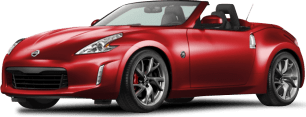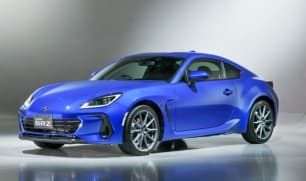The sports experience begins the moment your backside hits the driver’s seat. And to get to that point in the BRZ you have to be fairly athletic and flexible.
At just 1.3m tall this car is something of a low-rider, and you find yourself grabbing the A-pillar with your right hand, and adopting a ‘swing-down-and-in’ entry technique, bookended by a ‘grab-and-lift’ approach on the way out.
And that’s if you can open the door all the way. Sporty coupes look sleek, but those lengthy doors mean when you're parked next to another car in the shopping centre you have to fold yourself up like an origami crane for exit or entry. Literally, a pain.
But once settled behind the wheel, the BRZ is all business, with a simple, logical layout for all major controls and the heavily bolstered sports seat enhancing the cockpit feel.
The signature churn of the Subaru starter motor fires up the 2.4-litre ‘flat’ four and the first push into first gear highlights how smooth, yet precise the six-speed ‘box is.
Once on the move the second-gen BRZ’s extra torque is immediately noticeable, especially low down, and the way it’s delivered is more linear.
For context, as soon as tuners started putting the first generation 2.0-litre BRZ on the dyno, reports of a “mad” torque profile began to emerge. A distinct dip in pulling power at around 4000rpm was a bit of a head-scratcher, but the new 2.4-litre not only delivers more torque, its smoother arrival makes a notable difference.
You can expect 0-100km/h acceleration in the high six-second bracket (auto around 7.5sec) but it’s when the road starts to twist this car comes into its own.
Suspension is strut front, double-wishbone rear, and the BRZ uses aluminium front hubs to reduce unsprung weight, while Toyota's GR86 sticks with steel.
The Subaru also features a hollow sway bar, as well higher spring rates (all around), specific dampers, a firmer rear trailing link bushing, and a stiffer rear sub-frame.
The ‘flat’ engine helps lower the car’s centre-of-gravity, while the rear track has been widened by 10mm for extra stability. And if you really want to get the bit between your teeth a Torsen-type limited slip differential ensures drive is going to the rear wheel that can make best use of it.
At 1289kg the BRZ is quite trim, with things like an alloy roof, bonnet, and front fenders making a significant contribution to weight loss. Even the fuel lid is resin!
Tyres are 215/40 Michelin Pilot Sport 4 compared with the intentionally less-sticky Michelin Primacy rubber fitted to the previous BRZ. While I get that the intention was to make the car a little looser and prone to breaking traction, I prefer the extra grip of these Pilot Sports.
Precise and balanced, with great steering feel, the BRZ is a joy to punt along a quiet B-road. Thanks to the upgraded tyres and LSD, power down out of tighter corners is exceptional.
The flip side is you’ll need to be prepared for a firm ride over typically pock-marked Aussie roads. It’s just part of the deal when you sign on for a sports car at this price point.
The horizontally-opposed engine’s characteristically choppy sound adds to the fun, but bear in mind part of that is Subaru’s ‘Active Sound Control’ system using a speaker behind the dash to enhance it. You might not care, but I always feel short-changed when synthetic sound is brought into play.
Braking is by vented rotors front and rear (294 fr / 290mm rr), with two piston calipers at the front and singles at the rear. They’re great, and the pedal set is ideal for a bit of old-school heal-and-toe shifting on the down changes.






















